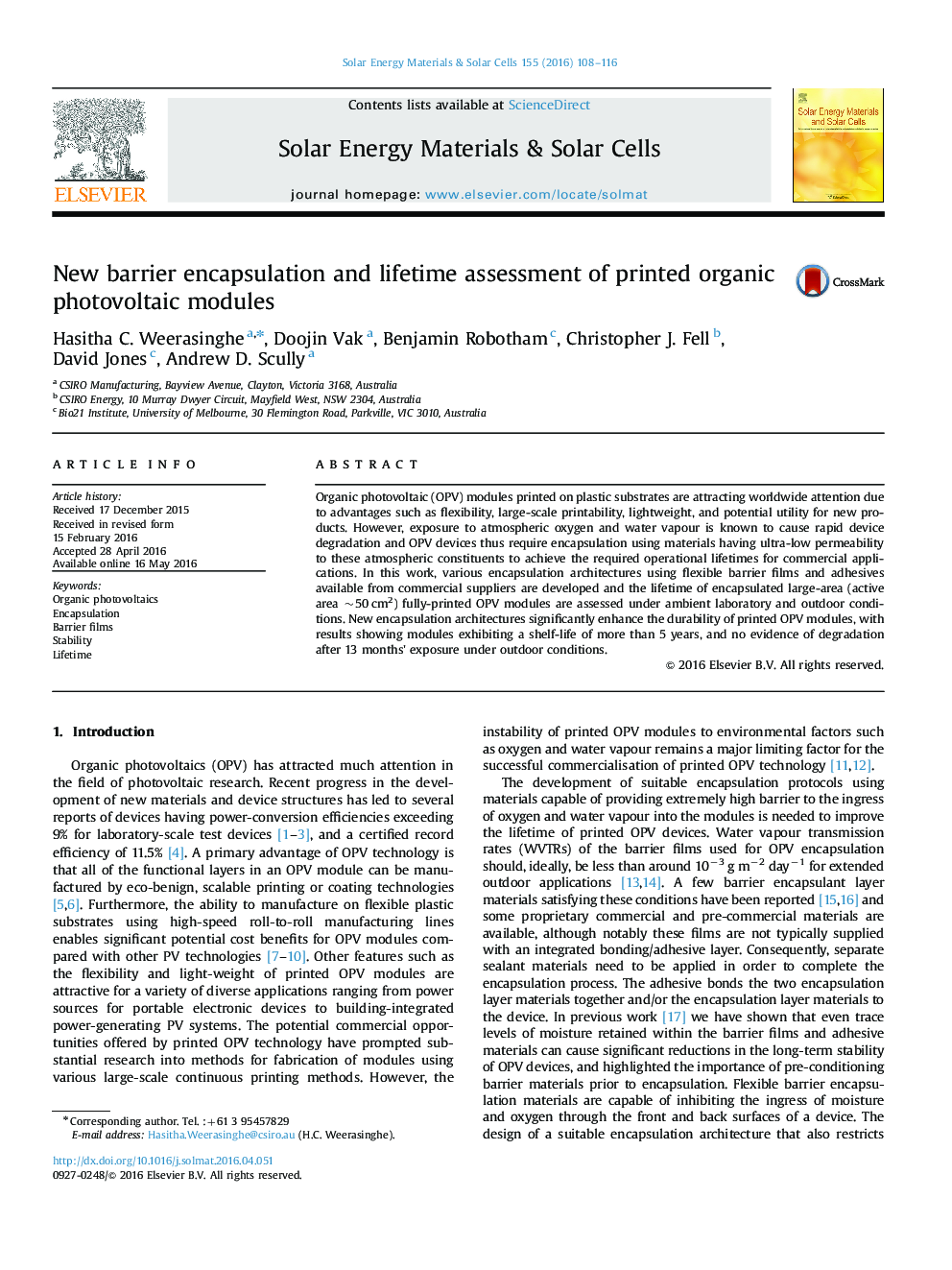| کد مقاله | کد نشریه | سال انتشار | مقاله انگلیسی | نسخه تمام متن |
|---|---|---|---|---|
| 77495 | 49283 | 2016 | 9 صفحه PDF | دانلود رایگان |
• Printed OPV modules were encapsulated using novel encapsulation architectures.
• PV performance was assessed for more than 1 year in indoor and outdoor conditions.
• New encapsulation architectures significantly enhanced the durability of the modules.
• Projected shelf-life of more than 5 years under indoor conditions has been achieved.
• No degradation is observed after 13 months׳ exposure under outdoor conditions.
Organic photovoltaic (OPV) modules printed on plastic substrates are attracting worldwide attention due to advantages such as flexibility, large-scale printability, lightweight, and potential utility for new products. However, exposure to atmospheric oxygen and water vapour is known to cause rapid device degradation and OPV devices thus require encapsulation using materials having ultra-low permeability to these atmospheric constituents to achieve the required operational lifetimes for commercial applications. In this work, various encapsulation architectures using flexible barrier films and adhesives available from commercial suppliers are developed and the lifetime of encapsulated large-area (active area ~50 cm2) fully-printed OPV modules are assessed under ambient laboratory and outdoor conditions. New encapsulation architectures significantly enhance the durability of printed OPV modules, with results showing modules exhibiting a shelf-life of more than 5 years, and no evidence of degradation after 13 months׳ exposure under outdoor conditions.
Journal: Solar Energy Materials and Solar Cells - Volume 155, October 2016, Pages 108–116
